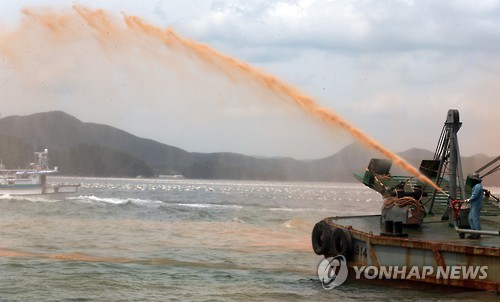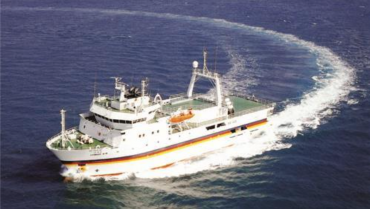
It has become an annual rite to see dead fish and images of the area being showered with red clay on the news every summer. (Image : Yonhap)
BUSAN, Aug. 20 (Korea Bizwire) – Every year in Korea, a harmful red tide is observed in the South Sea, killing thousands of fish at fish farms.
It has become an annual rite to see dead fish and images of the area being showered with red clay on the news every summer. However, the sight is very unfamiliar in regions other than Korea. Although Korea is the only country where the local government takes measures to remedy the red tide, other countries are also interested in the occurrence of red tide and ways to stop it.
Red tide has occurred in Japan since the 1970s, and has been blooming every year since 2000. Instead of using red clay, the Japanese use ordinary clay. It is scattered by the owners of fish farms. In Japan, rather than using relief materials, increasing the oxygen supply, moving the farm and emergency shipment is recommended.
North America and China seldom have red tides, but both countries are interested in the red clay remedy found in Korea. Scientists in North America are conducting research on preserving stable ecosystems and restraining eutrophication.
Since 2004, red tides have occurred in Southeast Asian countries. An official count hasn’t been conducted, but the incidence of red tides is increasing every year. However, since there are not many fish farms in those countries, red tides are not thought of as a huge problem.
In September 2008, a large scaled cochlodinium polykrikoides bloom occurred in the Persian Gulf, and continued for six months. Fish in fish farms as well as other marine creatures perished, creating a huge social issue. Countries such as Iran, Kuwait and Oman did not have any control technology at the time. They are now mastering the technique through joint research with Korea.
By Kevin Lee (kevinlee@koreabizwire.com)






